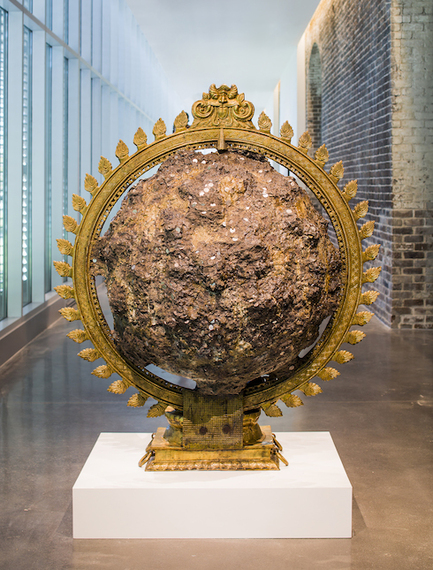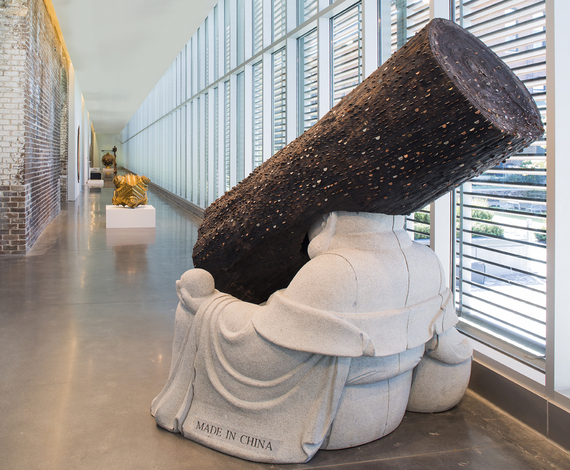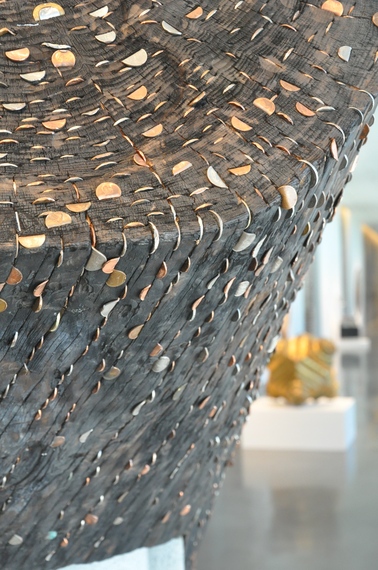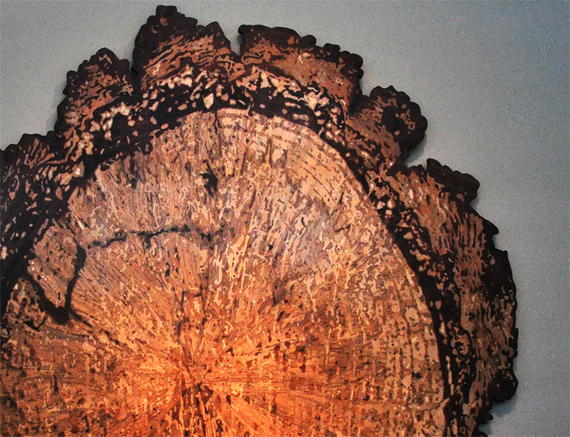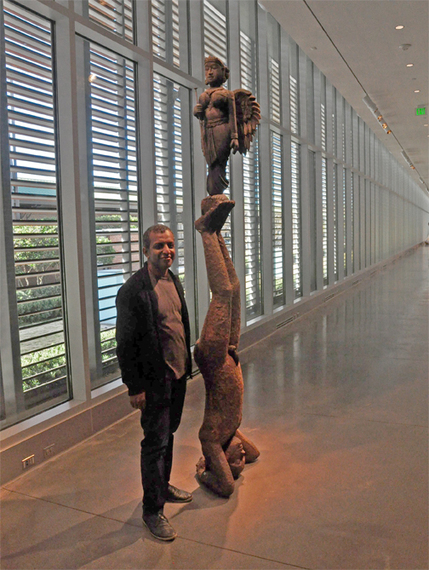At an oddly chaotic prize ceremony during the 2013 Delhi Art fair, with crowds jammed around an ill-lit open-air buffet, I had my first glimpse of Tallur's complex body of work as he stepped up to accept the honour from William Kentridge. But it was not too long after that he had his first New York show at Jack Shainman, and viewers in the U.S. can still get to see the works in the more bright and cavernous SCAD Museum of Art.
The artist's unusual initials (L.N. is Lakshmi Narayan) by South Indian tradition follow after his family name - and from his namesake ancestral village of Tallur in Karnataka, the artist began a journey that zigzagged the globe with some serendipitous bends: after being turned down for Painting, Tallur took up studying Museology at the University of Baroda in North Western India - where the dim vaulted halls crammed with venerated icons and ancient specimens may have skewed his reading of classical Hindu art with an ironic and humorous twist. For example, in Unicode, the figure of Shiva (as Nataraja, in the classic cosmic dance pose) in imitation of the canonic Chola dynasty bronzes, now generically sold as postcard deities in souvenir shops - is obliterated by an exploding lump of concrete within its central wheel... The myth is that Shiva incarnating as the Destroyer, dances for the destruction of old worldviews making way for a new cycle of creation. Coins embedded in the concrete show the economic model by which our world revolves, and the monetization of such religious icons. The sculpture, symbolic of the process of destruction, is also moistened with linseed oil, a traditional preservative.
Tallur employs traditional craftsmen for his sculptures also to contrast the parallel vernacular traditions of folk artisans who are less lauded than their classical cousins. We might view our evolution through technological advancements - but culture does not progress chronologically. While our tools may become technically keener, our creativity is an amalgam, constantly reshaped and inspired anew by overlapping layers of archeological history, replenished from the bedrock of cultural fragments, of painting, poetry and pottery. Tallur will sometimes juxtapose museum pieces with his own works. The artist tells me, speaking with his native Kannada accent, that the idea in Balancing Act was inspired by a Metropolitan Museum artifact depicting an angel carrying a nail (signifying crucifixion), which now balances atop a naked figure in a yogic headstand. The style is Indian but such ideas of angelic winged deities are distinctly western.
It was fitting that I should encounter Tallur's work across the globe from Delhi to Savannah, as circular a trajectory as his own syncretic studies and travels, which have taken him from Leeds to Korea where he now lives with his family. In his art, coins, capital and greed are themes that occur across cultures. In Apocalypse, he presents a coin-polishing machine, a device he found in use in South Korea to make metals shinier but which results, in this case, with the coins getting their denominations rubbed off, returning to their base metals, and so one gets back less than what one puts in.
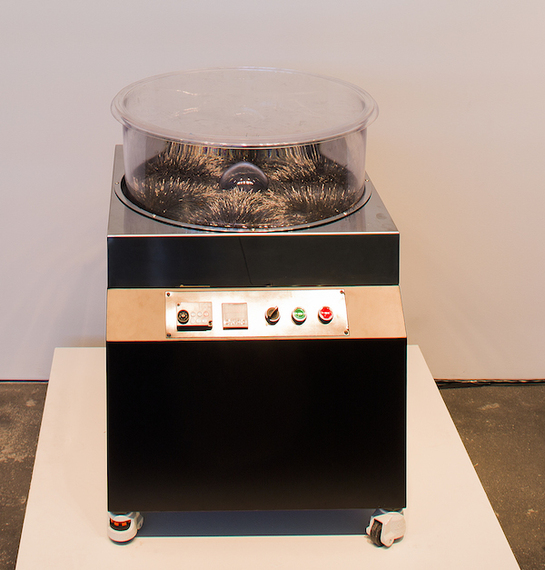
Tallur L.N. Apocalypse, 2010 (coin polishing machine) Electro magnetic polishing system, coins, framed plaque
Tallur L.N. Chromathophobia, 2012 - Wooden log, granite and hammered coins
Chromathophobia here refers to the fear of money (from the Greek chrimata, and in this case, colour or chroma of coins) - in which a Buddha-like figure is crushed under the burden of a giant log embedded with coins. The legend from 16th c. China is that a rich man renounced his fortune to become a Buddhist monk, turned now into an idol symbolic of wealth. Tallur though, sees the fat monk still trapped by his corporeal weight. He offers museumgoers hammers to wedge coins into the wood as a therapeutic ritual - our relationship with money being deeply entwined with our spiritual condition. The work is also a refreshing tactile departure from the 'no-touching' policing in today's art world.
In Graft, an exquisite piece of marquetry, he jigsaws together a puzzle of wood pieces that mimic annual growth rings to form a giant cross-section of a tree. Each piece holds within it, its secret age rings, just as surgical skin grafts might embed and conceal true age.
In a lecture at the museum, the art critic Jerry Saltz remarked, "Artists don't own the meaning of their work," and though that holds true in an absolute sense, it was illuminating talking to Tallur about the mythologies embedded in his art. And while some of the narratives may seem buried (but well-worth digging up), his sculptures possess a stand-alone austerity that is elegant to behold.
For further information:
Tallur L.N. Balancing Act - Oct. 7, 2013 - March 23, 2014 - SCAD Museum of Art
All photographs unless otherwise noted from: Tallur L.N., Balancing Act, 2014. Installation view, SCAD Museum of Art. Photography by John McKinnon, courtesy of SCAD.
Text & Interviews: www.KisaLala.com
Correction:This post previously misspelled the artist's name as Tellur L.N.

